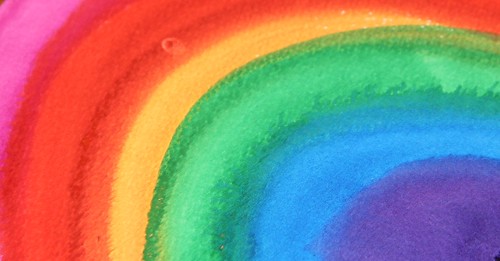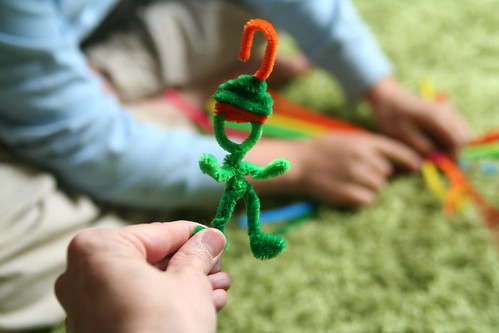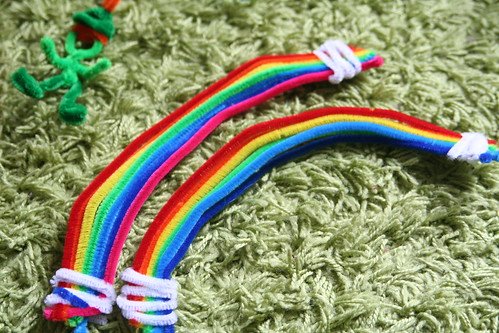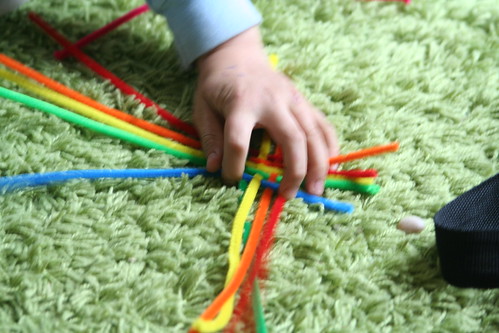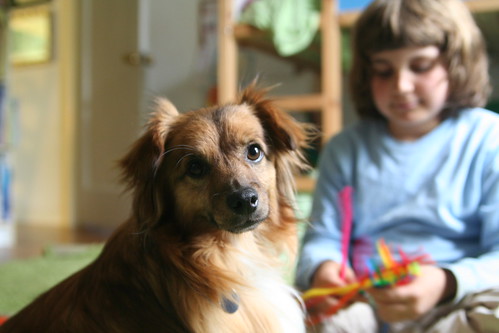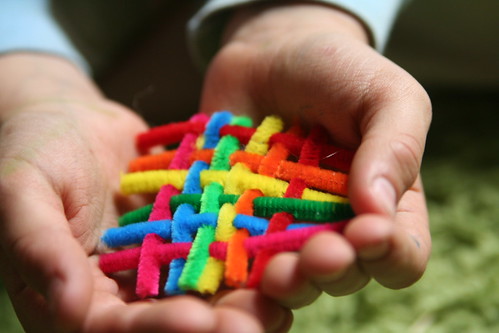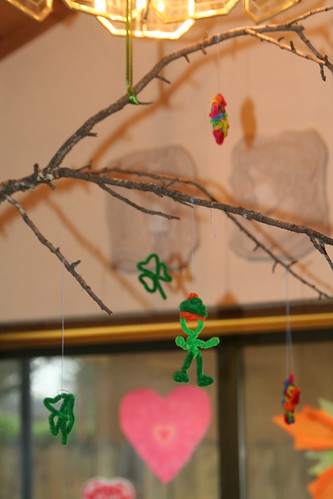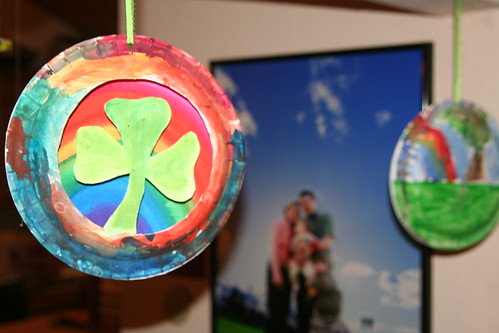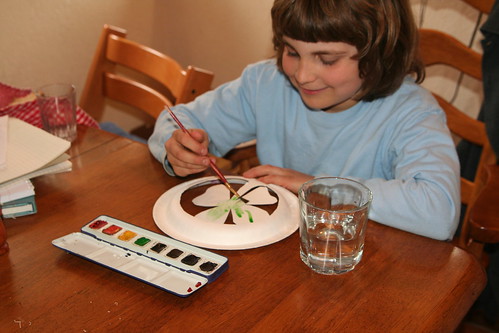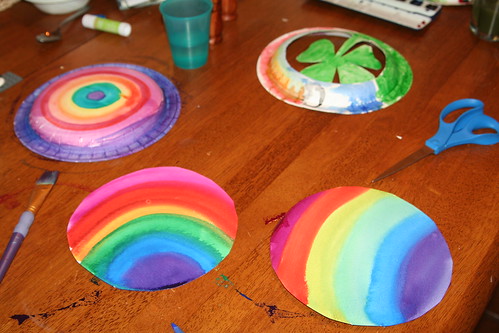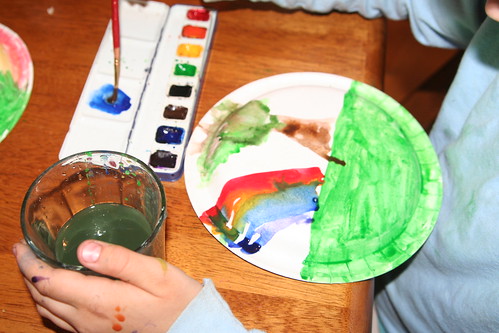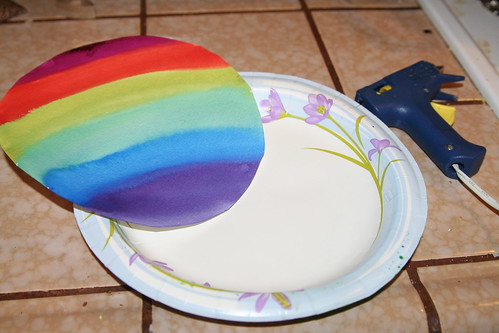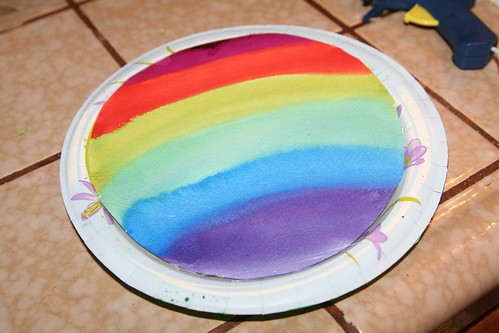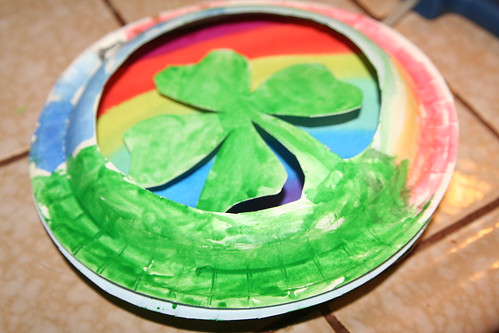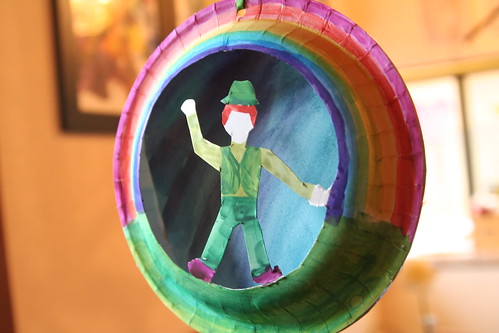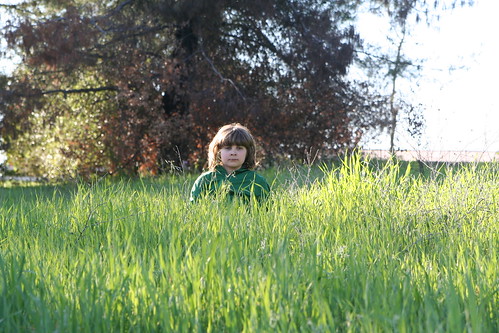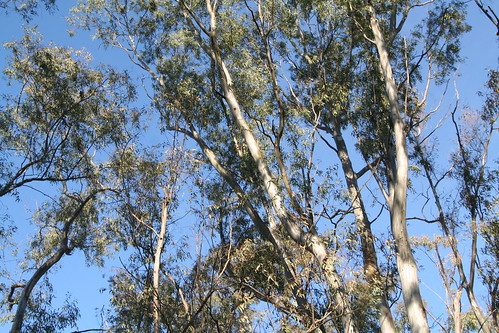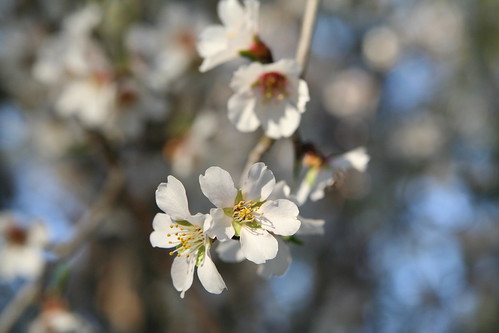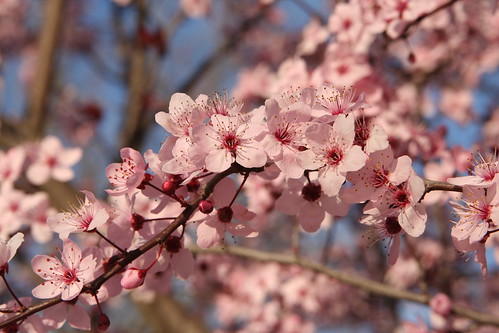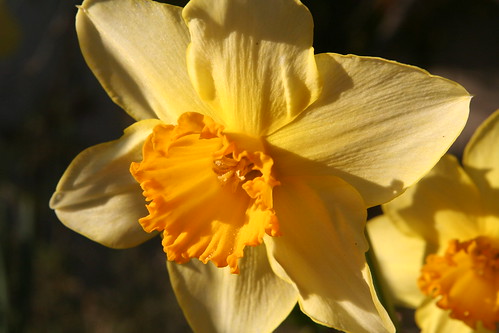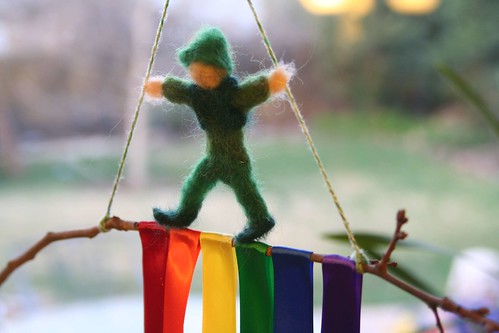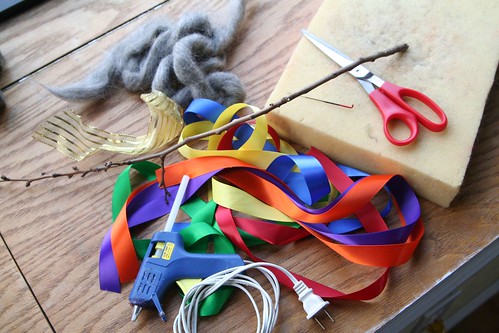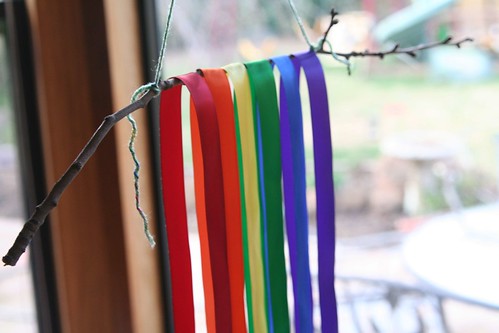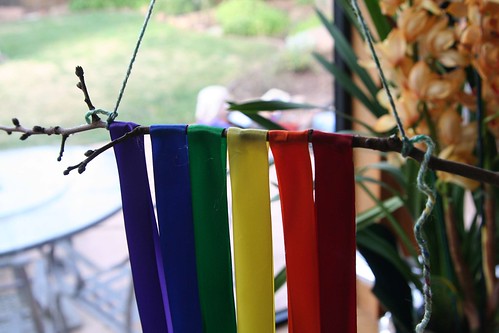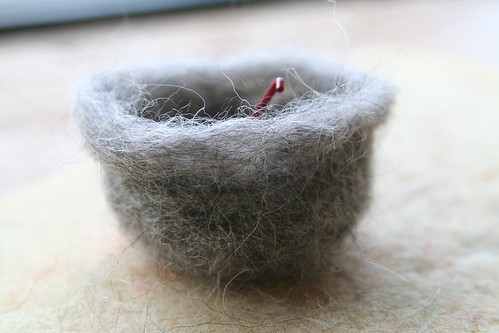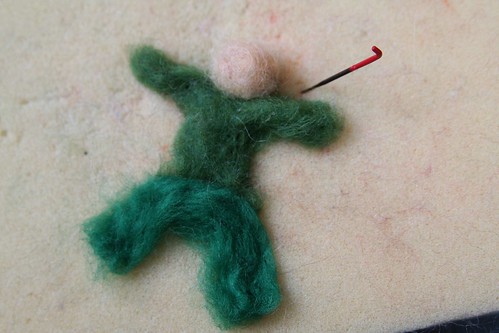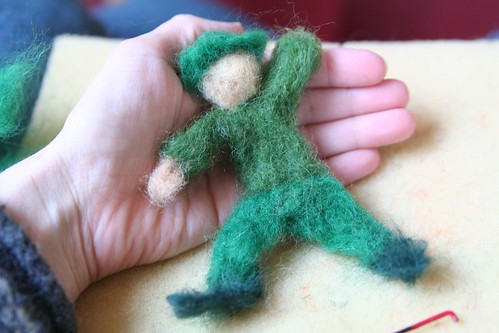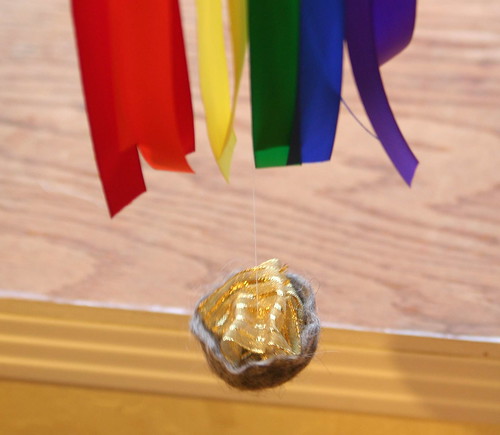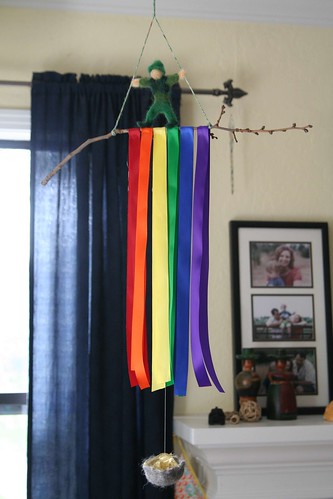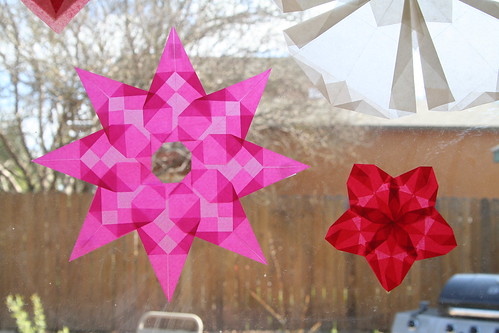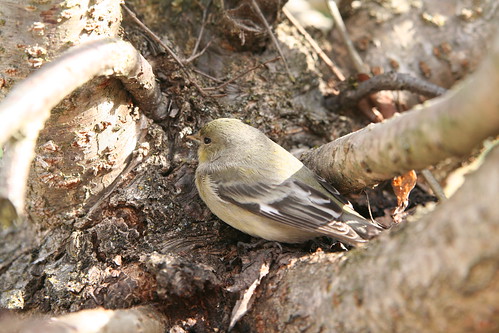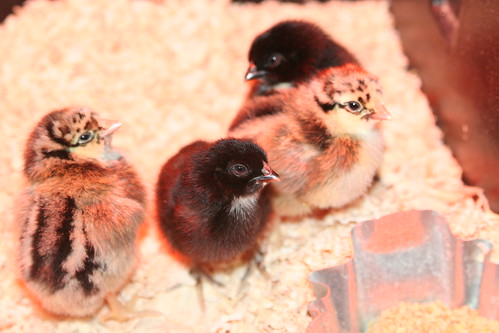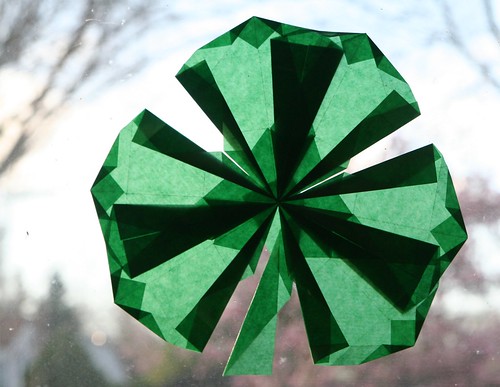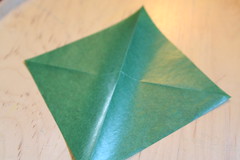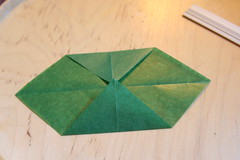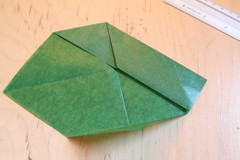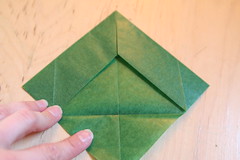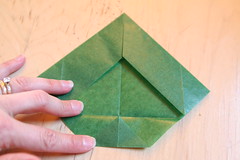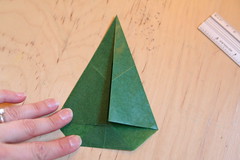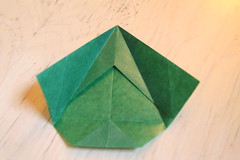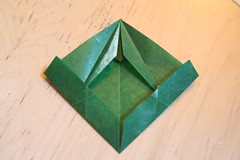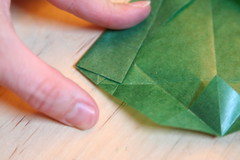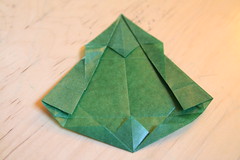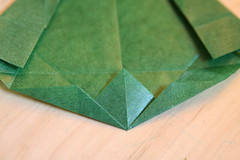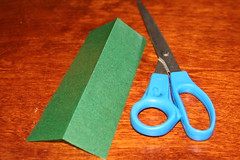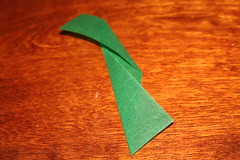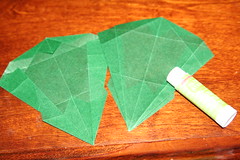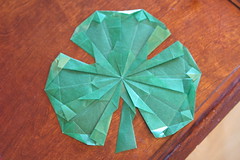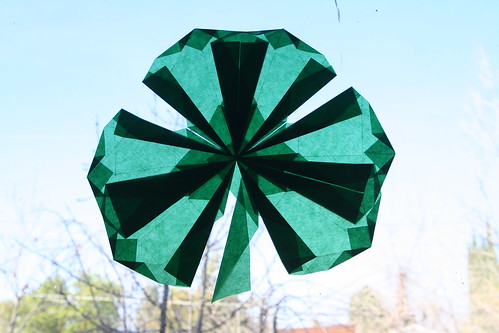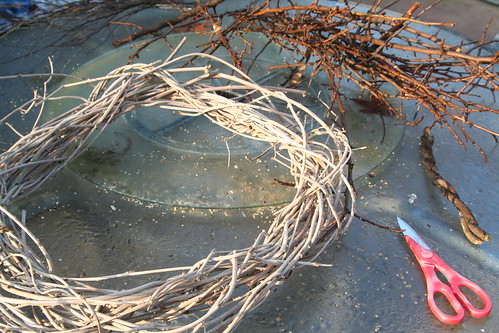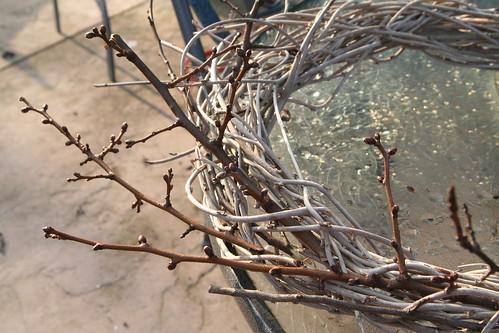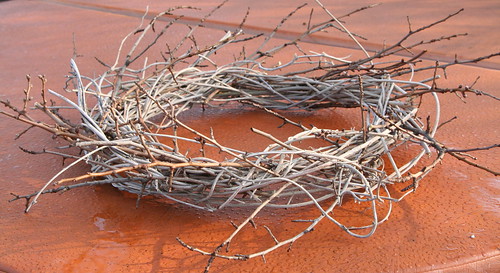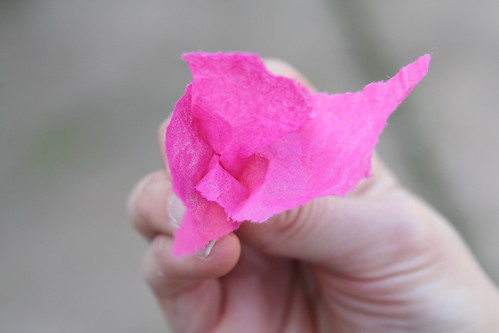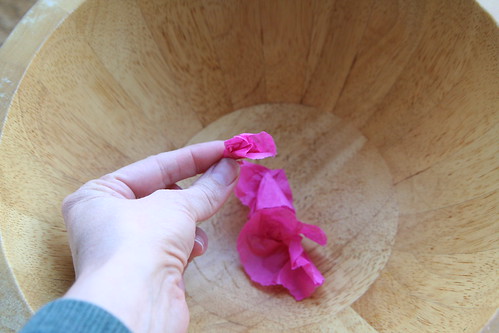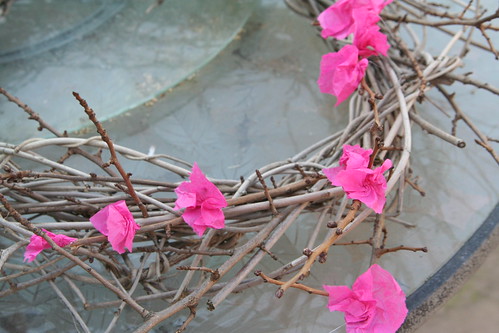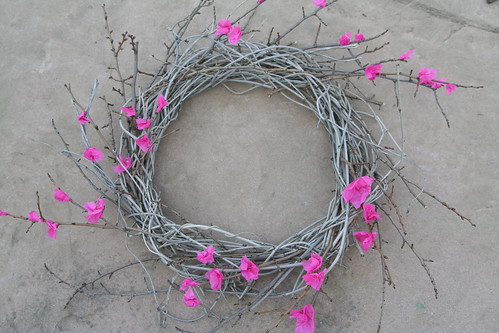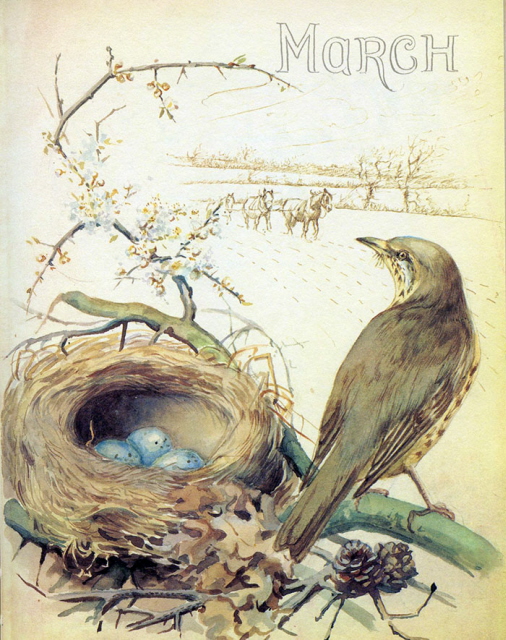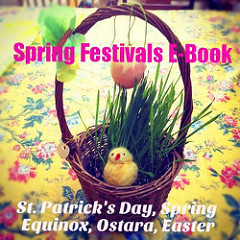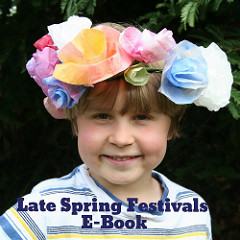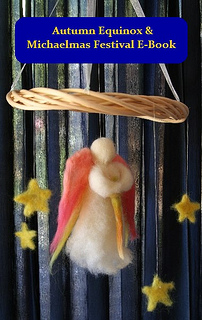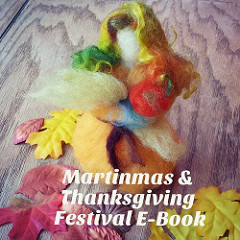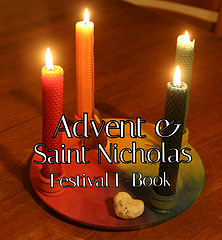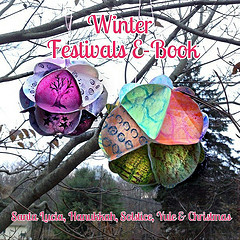
It seems to me that Leap Day is a special day, one where magic might be closer at hand than usual, since it comes only once every four years. Surely the fairies and elves must come visiting on this special day, when spring magic is so potent and new!
I did some poking around on the Internet and found, well, not much. I asked our Waldorf teachers if there was a tradition of observing Leap Day, but no one I asked knew of any.
That didn’t sit too well with me, so I sat down and wrote a story to tell my boys. Here it is, in case you need a Leap Day story to tell.
**********************************************
The Boy and the Elf
by Sara E. Wilson
Once upon a time, in a land far from here and yet not so far, a child lived with only his grandmother in an old cottage with walls so thin that when the howling winds blew they found their way through the cracks to blow out the candles. The boy loved his grandmother very much and she loved him. They spent lots of time together every day. He helped her with the chores, bringing in the firewood and scrubbing the soup pot. He wound the yarn that she spun into neat little balls to be sold at the market, for he had good eyes and nimble fingers, but best of all, he had a warm, golden heart.
Although the grandmother sang to the boy, and baked him sweet cakes on his birthday, and told him stories by the fire every evening before bedtime, the boy sometimes felt lonely, for he had no brothers or sisters and no playmates. When grandmother went into town to sell her yarn, he sometimes stayed behind and spent his time wandering in the woods. He had a favorite creek, where he liked to catch frogs in summertime, and a favorite meadow, where he liked to lie on his back in the spring and watch the clouds fly past. He had a favorite tree that he hugged and climbed, whose coppery leaves he danced and jumped in during the autumn when they fell to the earth. He also had a favorite cave in the mountainside at the very edge of the farmer’s orchard, where he dared himself to go in the wintertime.
As it was wintertime now, on the day the boy had some time to himself, he went to the small cave. He always hoped he might hear coming from it sounds of snorts and snores from a sleeping mama bear. He never did hear such sounds, but he never gave up hope of someday hearing them. The orchard was in full bloom now. The air smelled sweet and the trees were clouds of white and pink blossoms and the ground around the cave entrance was littered with pretty petals. He listened carefully, and heard not the hoped-for snores of bears, but a high-pitched chuckle coming from inside the cave.
The boy wondered what could be making such a noise and called out, “Hello! Is someone in there?”
Pop
There before him, just outside the cave, stood a little man. His nose was sharp and his ears, sticking out of two holes in his hat, were pointed. He was dressed all in brown from the tip of his tall hat to the cuffs of his long trousers. The only things about him that weren’t brown were his rosy cheeks and his very blue shoes.
“What do you want?” asked the little man.
“Why, nothing,” stammered the boy. “I just came to the cave to see if any bears were here sleeping.”
“No bears. Just me,” said the elf, looking rather cross that he had been discovered. “I come here to be alone.”
“Um, me too.” The boy looked down. “I’m usually alone unless my grandmother is with me. Why were you laughing?”
“I’ve just played a marvelous trick on the farmer’s wife, who forgets to leave out nibbles for me. I’ve soured the milk! And down the road a bit I came across two children shouting ungrateful words at their mother, so I’ve got them good, too. And that, my boy, is why I was laughing.”
“How did you get the children? What did you do?”
“While they were sleeping I tied their hair in knots. They’ll have a time of it brushing them out in the morning.” The little man burst into a fit of giggling lasting several minutes. “Well, since you found me here on a Leap Day, you have to tell me what you want—and, if it’s within my power to, I must give it. That is the magic of Leap Day, which comes but once every four years. So what’s it to be?”
The boy sat down and thought a good while about what he might ask for. While he waited, the little man first tapped his foot, then stood on his hands, then jumped up and spun in circles to entertain himself.
The boy didn’t want to wish for wealth or beauty or playthings. He and grandmother always had just enough to eat, so he didn’t wish for rich foods or sweets. He realized what he wanted more than anything was a friend. When he thought that, he smiled and listened hard for the little voice inside him to tell him whether that was indeed what he should wish for. The little voice in his heart said, yes.
He plucked up his courage and said to the upside-down elf, “I wish that you would be my friend, and teach me about fairies and gnomes and leprechauns, and creatures of the woods.”
The little man at first seemed surprised. He planted his blue shoes on the ground and stood up. Shock filled his wide brown eyes and he blushed from the hollow of his throat to the tips of his pointed ears. But then he smiled, and a giggle bubbled up from his belly. Soon he was guffawing and rolling on the ground again.
When he finally stopped laughing, he said, “And so it shall be, my friend. My little human friend. You will find me here, at this cave at the edge of the orchard whenever you come. You know I am here when you see the flowers. And we will talk and play and be fast friends. We’re Leap Day Friends forevermore.”
And from that day on, the boy never felt lonely again. He lived with and helped his grandmother, who loved him ever so much, and he visited the cave beside the farmer’s orchard as often as he liked to meet his elfin friend. They had such good times together and the boy learned ever so much.
And if it ever was, it is even still.
© Sara E. Wilson
